Thanks to some generous donors and the UC Natural Reserve System, Point Reyes Field Station is installing a weather station! The weather station will be a part of UC Natural Reserve System’s network of weather stations and provide a record of weather-related information at the field station’s location in Olema Valley. During the past year we have worked closely with Point Reyes National Seashore to obtain necessary project permits and approvals (e.g., cultural and historic resources, National Environmental Quality Act, etc.). Now the most exciting part is happening: building the weather station.
The base of the weather station’s 30-foot aluminimum-frame tower will be attached to a metal frame anchored in a concrete base and held in place by three guy wires. Powered by an array of solar panels set up adjacent to the tower, all the environmental sensors and other equipment will be attached to the tower or deployed at ground level nearby. Sensors will include temperature, relative humidity, wind speed, total solar radiation, photosynthetically active radiation, precipitation, barometric pressure, and soil moisture and temperature to half meter depth. We are also installing a Phenocam, which will regularly photograph the vegetation in Olema Valley north of the tower, eventually providing a long-term record of seasonal changes and shifts in vegetation patterns over time. The data from the sensors will be sent via radio to a receiver at the Hagmaier House, then channeled to our satellite internet system, and eventually to the data storage location for the UC NRS weather stations.
Installation of the weather station is occurring in two phases: 1) building the concrete base and the solar array, and 2) installing the tower and the sensors. Of course, each phase includes many steps and lots of coordination!
A few weeks ago we built the concrete base and the solar array. Zac Tuthill, the Assistant Manager of Blue Oak Ranch Reserve, kindly took the lead for the build and Wendy Baxter, the UC Natural Reserve System’s Weather Station Technician, assisted. Before we drove the truck to the site, the Seashore’s roads and trails crew kindly mowed the area for us, giving us a clear place to work and reduce fire hazard. Here’s a view of the freshly mowed spot.
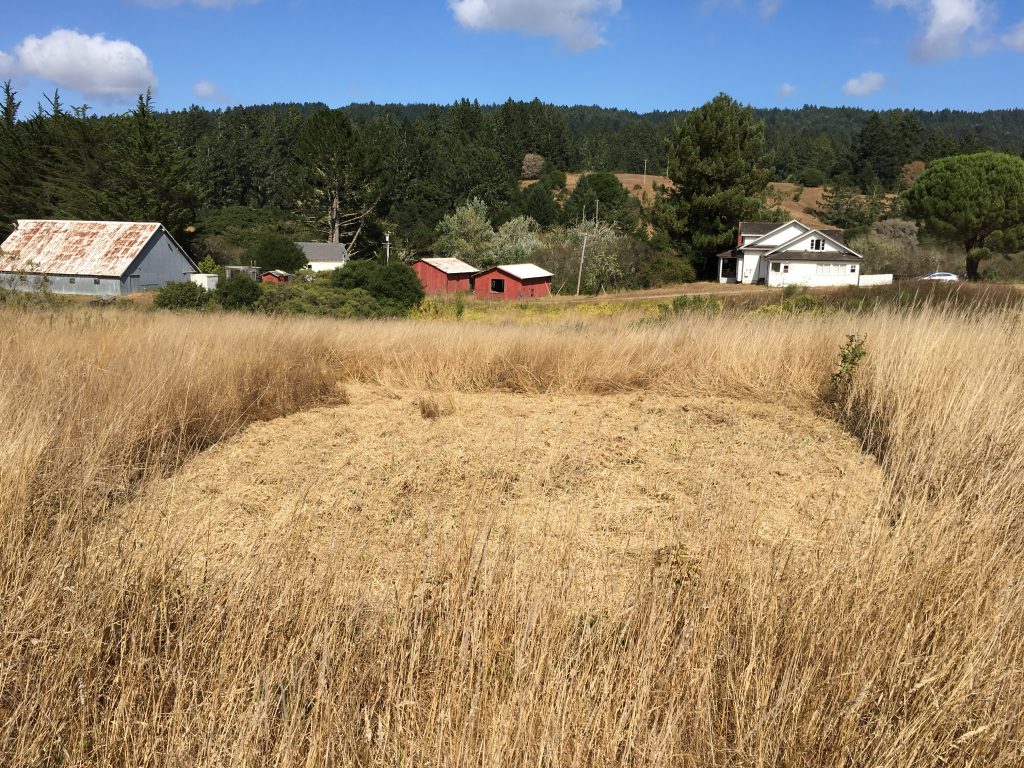
After determining the most level spot we started digging a hole for the 3 ft x 3 ft x 1 ft concrete base. The soil in the grassland was loamy and quite easy to dig. Zac then made quick work of building the frame for the concrete pour and really got into making sure it was level.
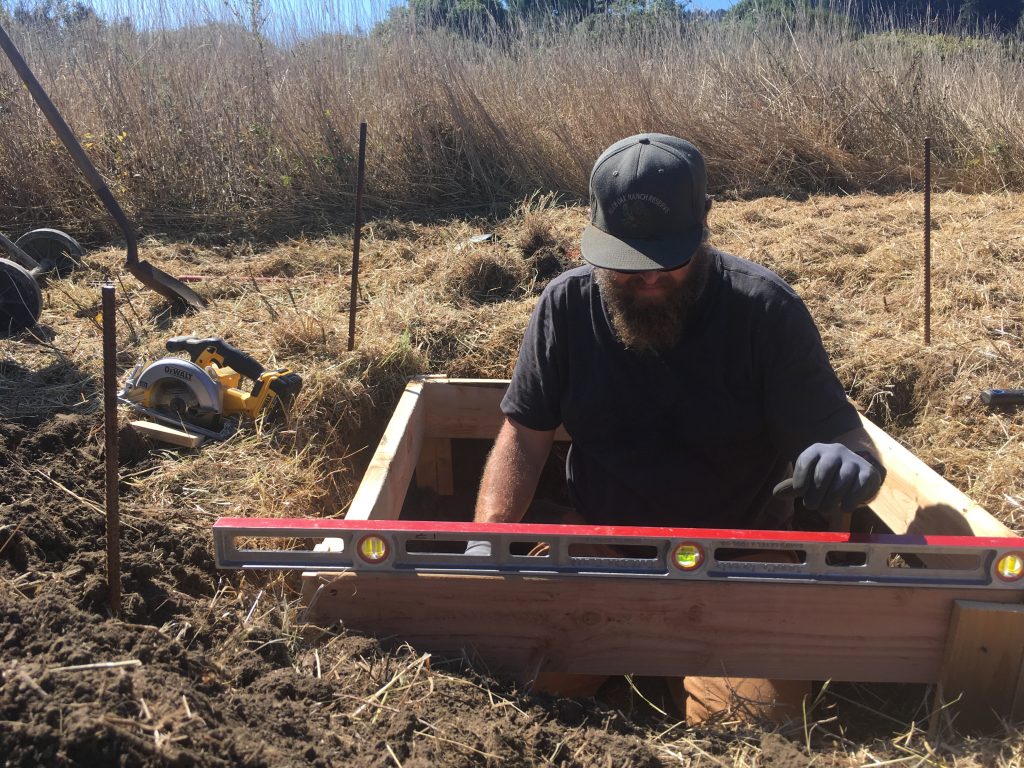
Zac then cut steel rebar to fit in a grid inside the concrete frame, adding needed strength to the base. Wendy and Zac then installed two 90 degree PVC pipe conduits for wires to run from the solar array and the rain gauge to the tower. You can see the tops of these conduits in the photo below on the left side of the wood frame, with tape covering the top of each of the pipes to prevent concrete from falling inside. Zac mixed bag after bag of concrete with water from a water tender he towed to the site, pouring each bag of mixed concrete into the frame while Wendy and I spread out the concrete and ensured even coverage.
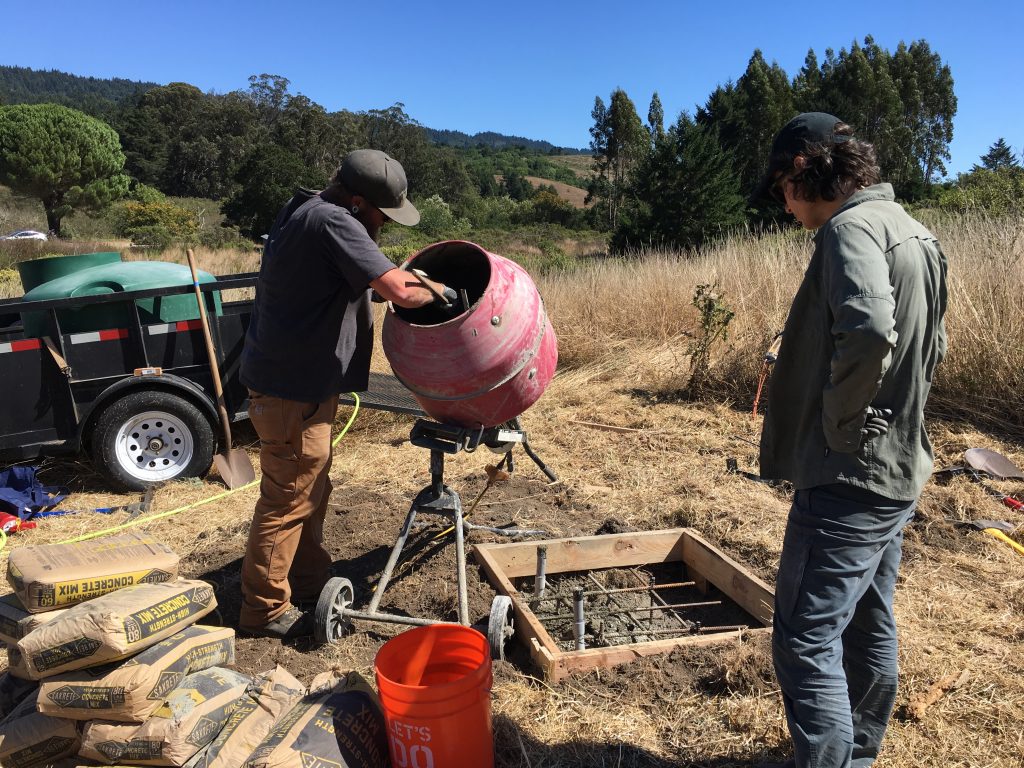
Wendy and Zac insert the metal frame into the concrete. The frame will eventually support the tower and was carefully aligned due north using a compass. The wood boards were placed beneath the metal frame to ensure it did not set into the concrete. That way we can adjust the height of the frame and tower later if needed.
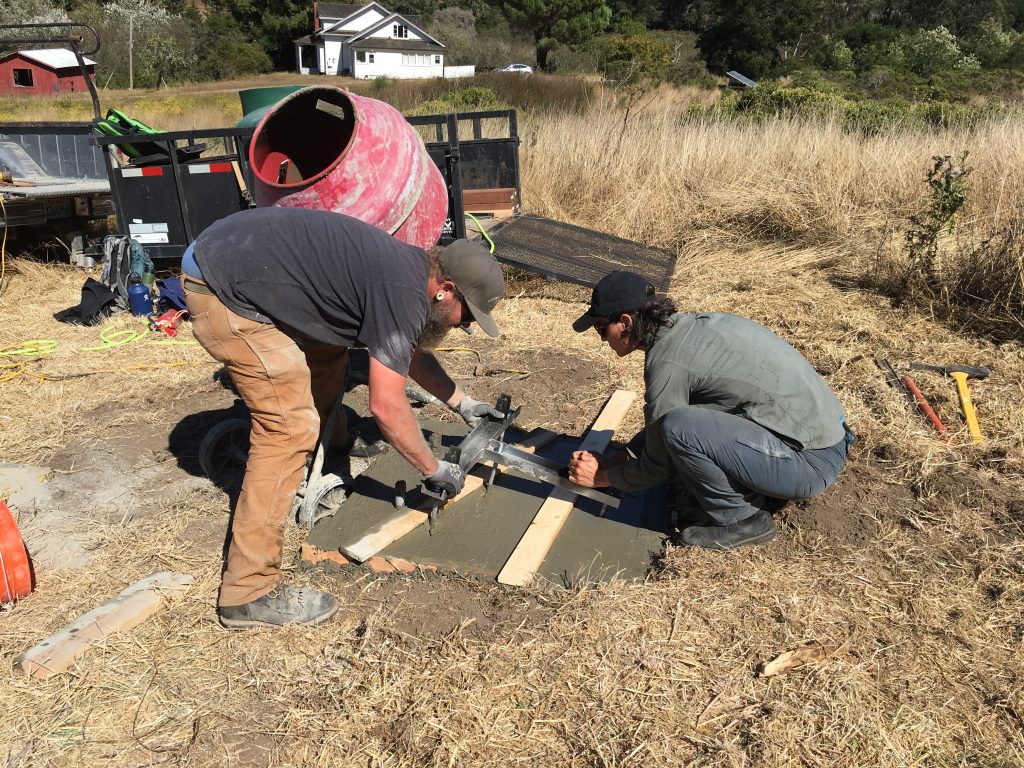
Once the concrete had cured for about 45 minutes Zac and I signed the concrete to mark the occasion for posterity (“PRFS 2019”).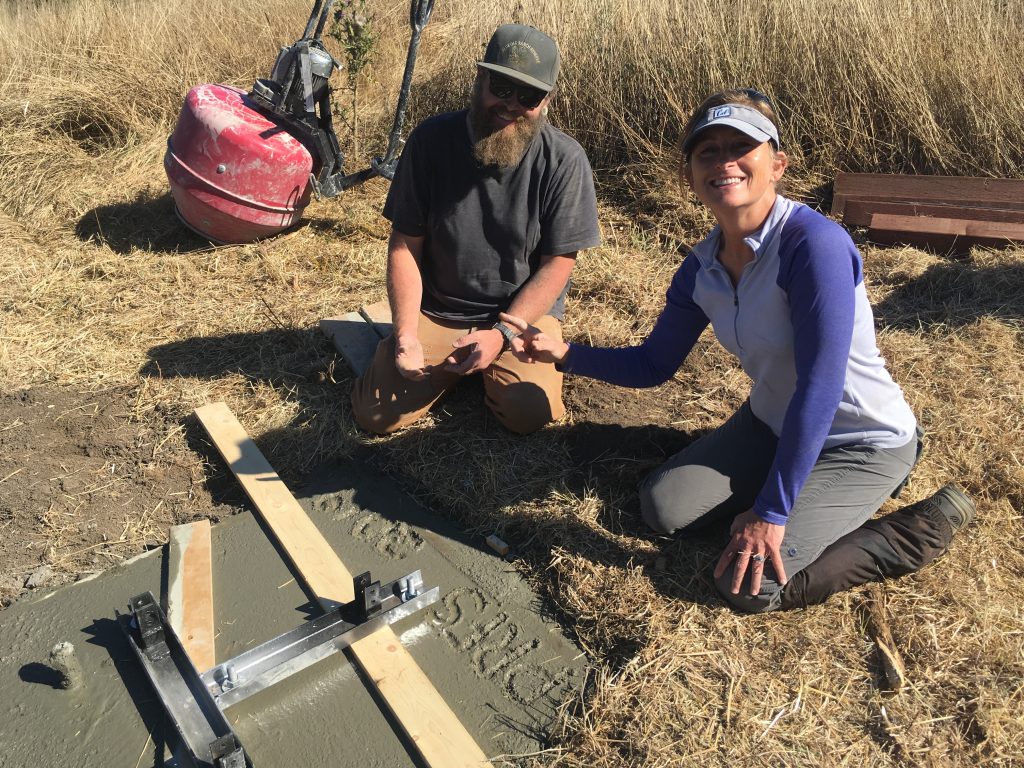
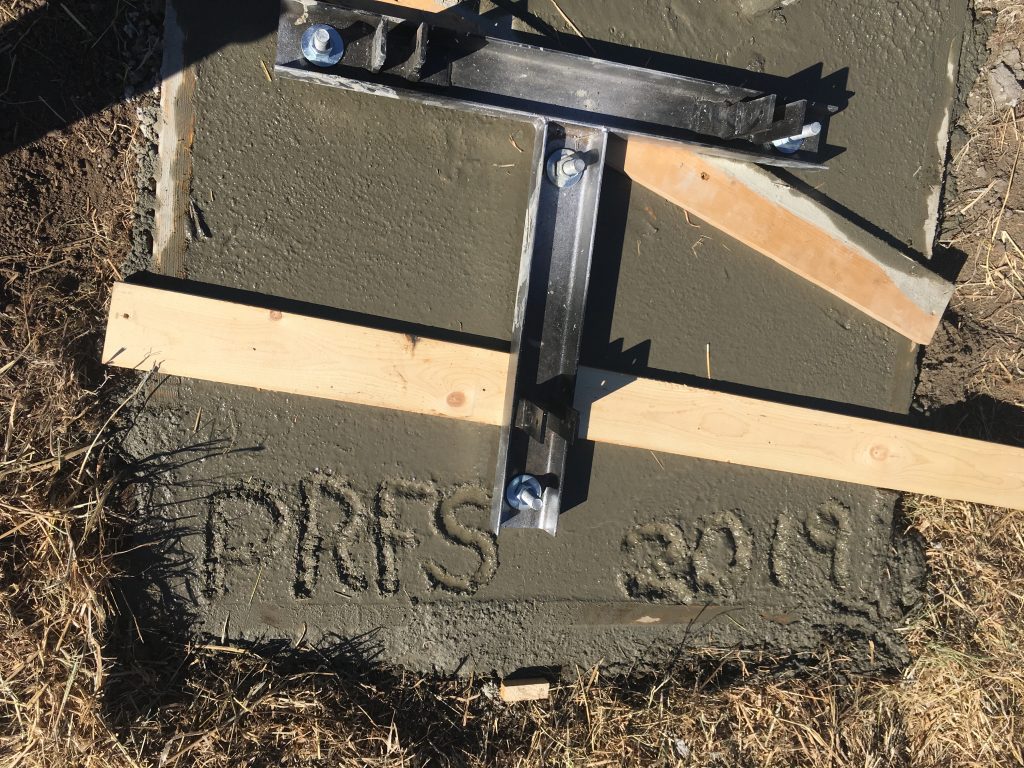
The next day’s tasks was to remove the wood frame around the concrete base and build the solar array that will power all the sensors, the Phenocam, and data transmitter. The solar array rests on a base of pressure-treated 4 in. x 4 in. wood on top of four buried concrete piers with metal straps to hold the wood. After deciding on a level spot near the tower — but not too near so things falling from the tower don’t hit the solar panels — we dug areas to place the concrete piers and leveled, leveled, leveled. Wendy and Zac fine-tuned the alignment of the tracks for the solar array using a compass to make sure it faces south. The array is built so all angles of the solar panel can be adjusted as needed.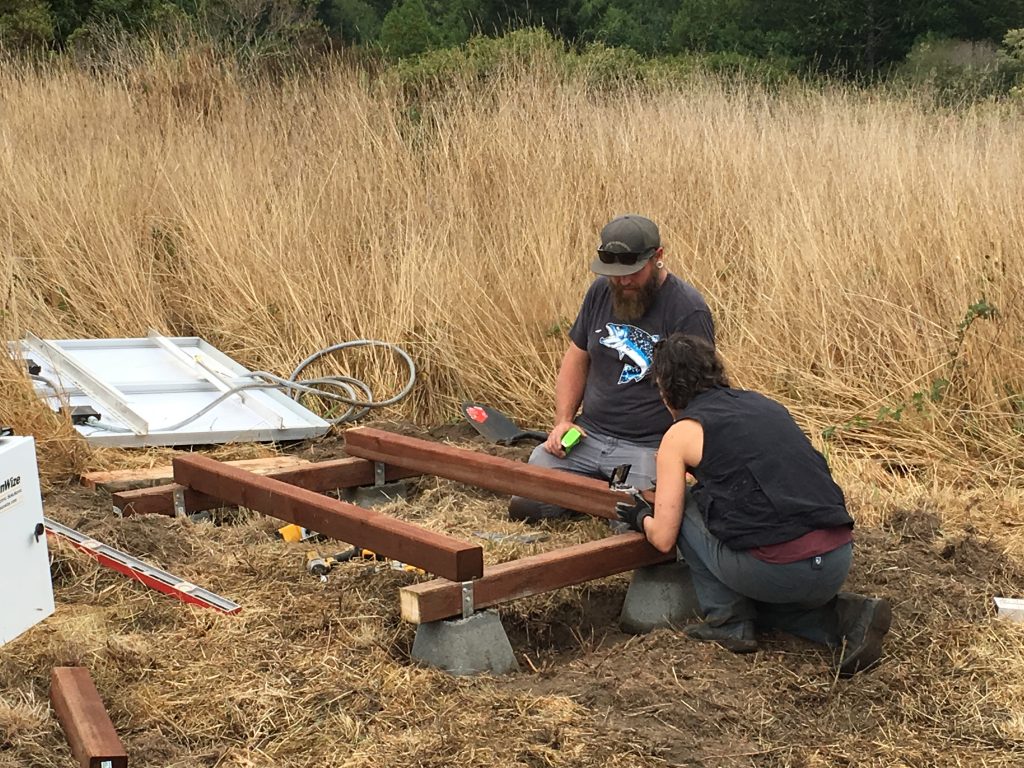
Zac and Wendy mount the solar panels onto the tracks on the base. 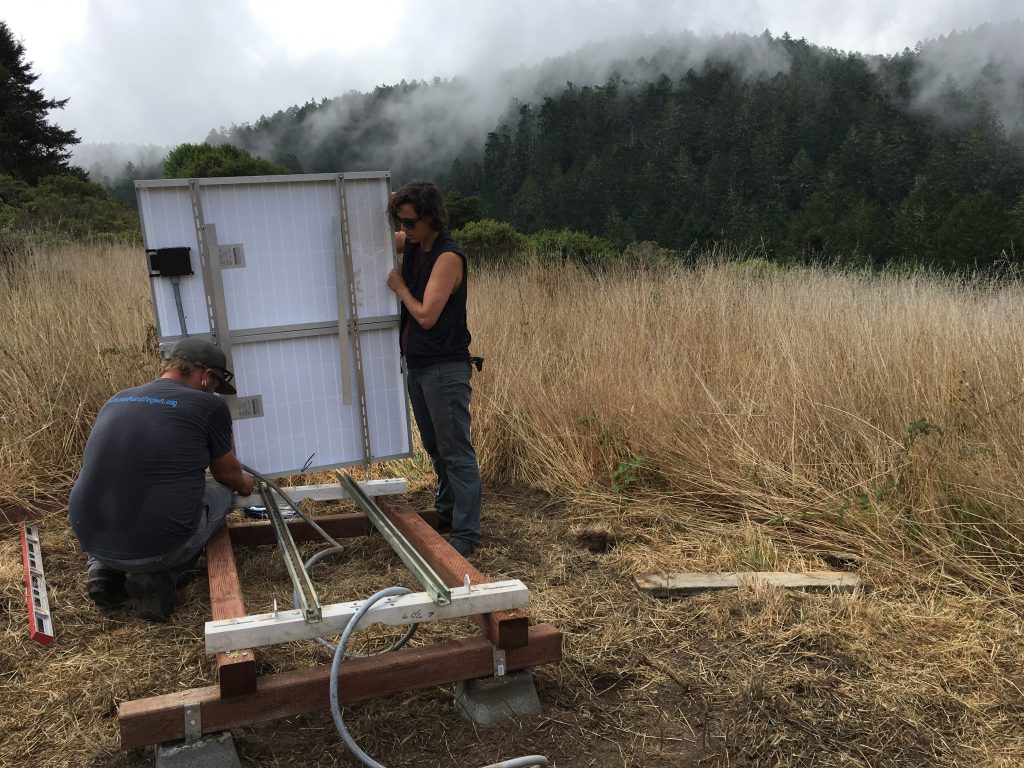
Here’s a view of the completed concrete base and solar array awaiting the tower and sensor gadgetry. The locking white metal box will placed at the base of the tower and house the two batteries.
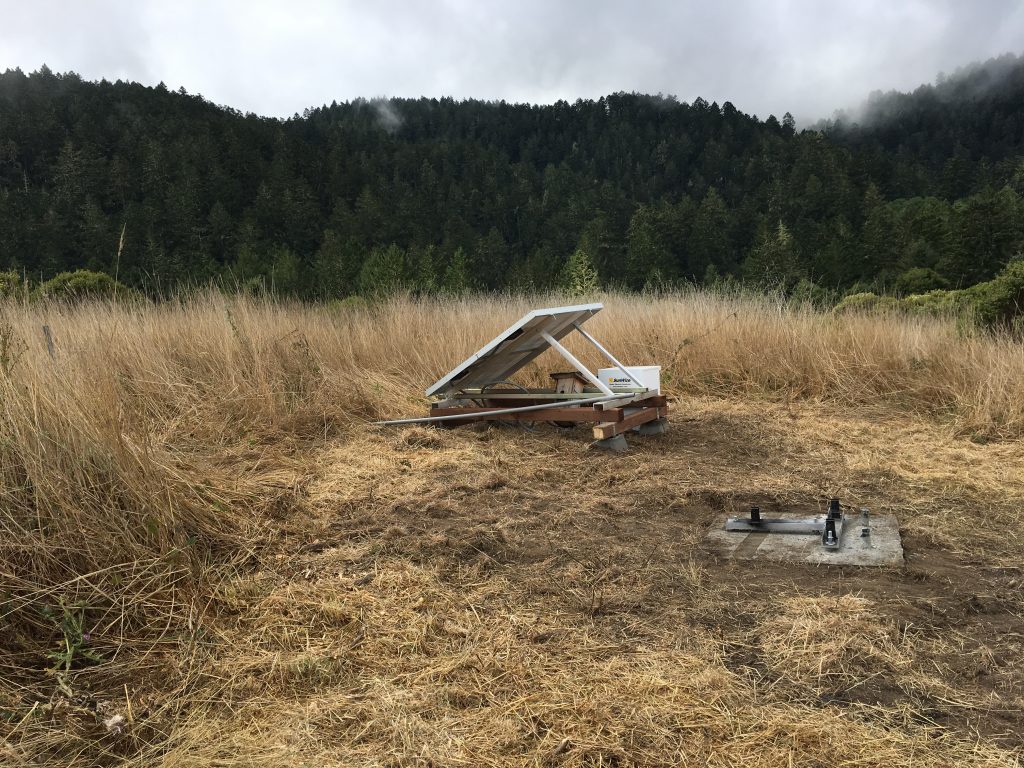
The 30 foot tower and sensors are on their way to UC Berkeley as I write this. Stay tuned for a report on the installation of the tower in the near future!
